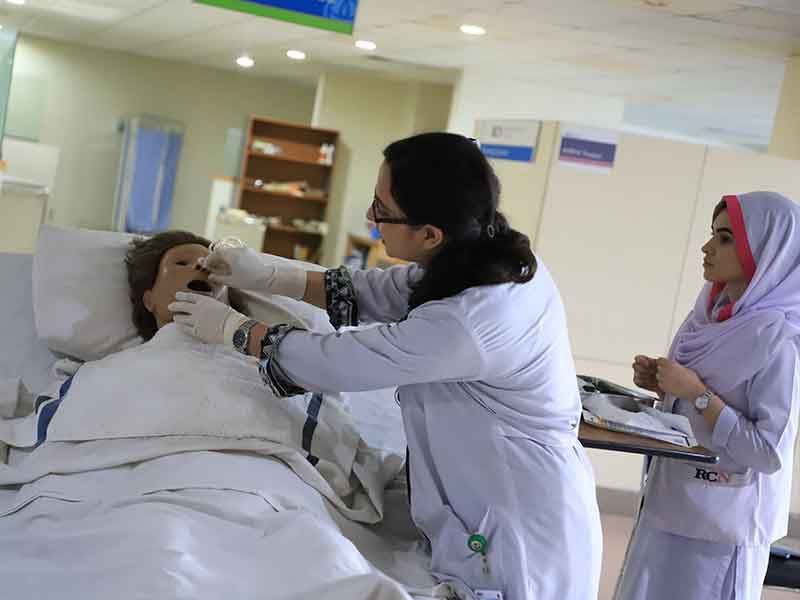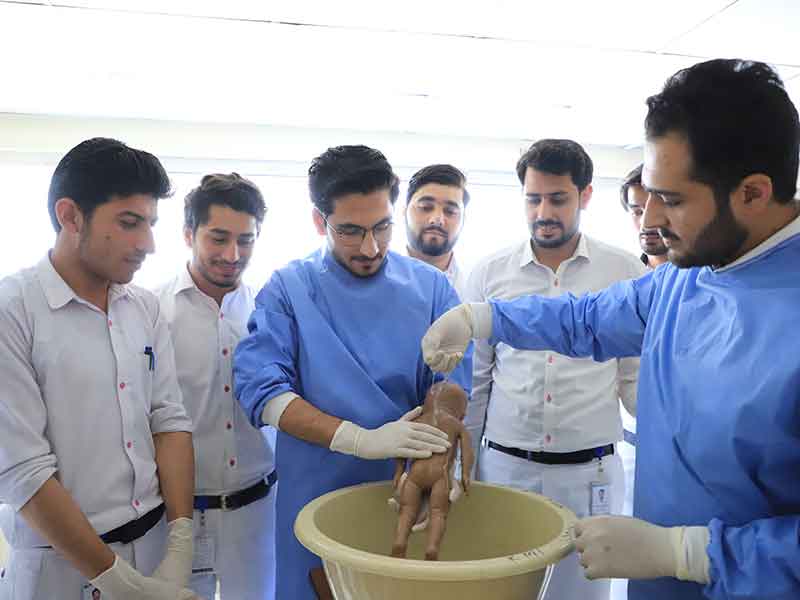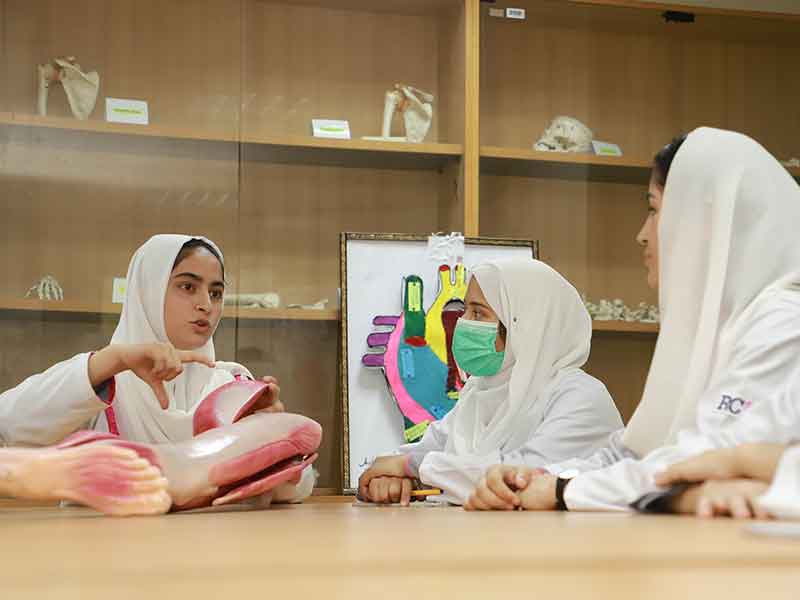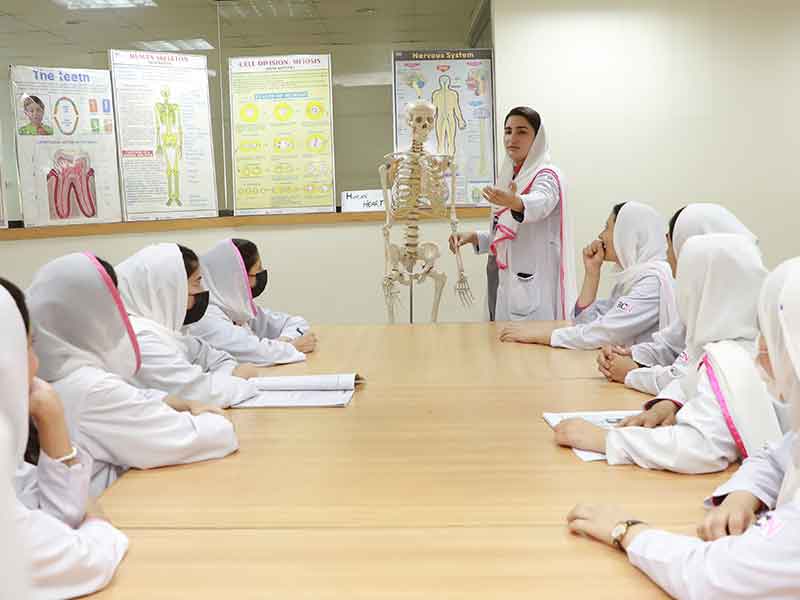Clinical Skill Lab
Rehman College of Nursing (RCN) skill laboratory is committed to providing a safe and effective learning environment for its students, focusing on enhancing their skills related to patient care. The skill lab at RCN is fully equipped with state-of-the-art facilities and follows standardized operating procedures (SOPs) to ensure students can practically perform their clinical objectives.
The skill lab at RCN comprises different areas designed to mimic real healthcare settings.It includes an emergency room (E/R) setup, a nursery, a general ward, and a semiprivate room. These areas allow students to simulate various healthcare scenarios and practice their skills in a controlled environment. In addition to practical exercises, the skill lab at RCN also offers visual activities utilising LED technology. This enables students to engage in interactive learning experiences and enhances their understanding of various concepts and procedures. Overall, RCN’s skill laboratory is dedicated to providing students with a comprehensive and hands-on learning experience. By offering a fully equipped facility, following SOPs, and incorporating visual activities, RCN aims to enhance students’ abilities and prepare them for real-world patient care scenarios.
Training Perform in Skill Lab
Skill Lab Equipment
Simulators and manikins mentioned
We have a range of simulators and manikins available for various training purposes. These include:
In addition to these examples, we have a wide range of simulators and manikins available to cater to various medical training needs. These training tools provide a safe and realistic environment for healthcare professionals to develop and refine their skills before working with real patients.
Science Museum
In our skill lab science museum, we have exhibits that focus on various systems and structures of the human body. Here is a list of what you can expect to find:
These exhibits provide an interactive and educational experience, allowing visitors to learn about the different systems and structures of the human body in an engaging way.







